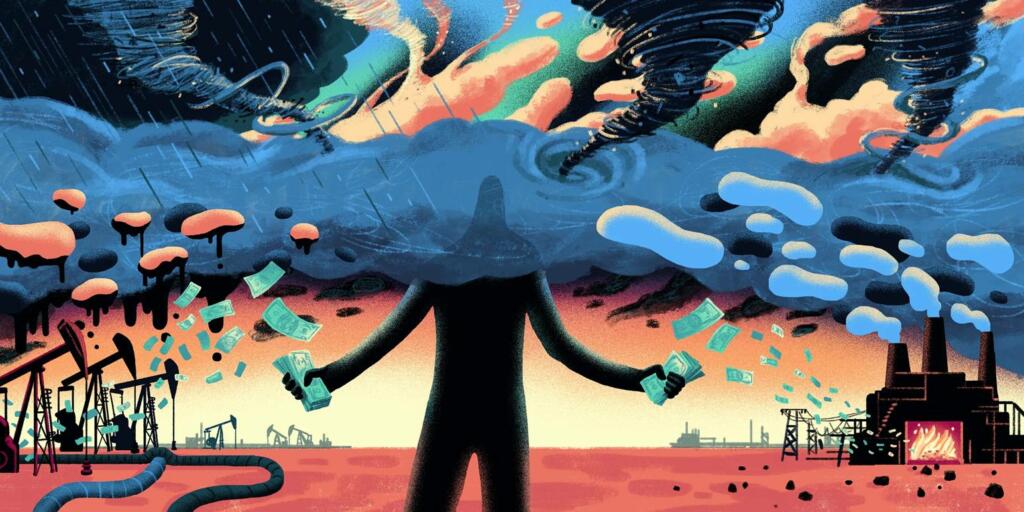No matter how much you focus on individualism, ultimately you are part of a societal framework. An individual entity can’t remain in a self-interested narcissistic silo, even when it is a country. Frankly, it is absurd that I have to even point it out. But, there is a reason and it is western countries’ hypocrisy on Green energy.
Fineprints of Paris climate agreement
After passing on bucks for decades, western countries finally agreed on something to stop the climate crisis engulfing human lives on Earth. In 2015, Paris Climate Accord was signed. The accord has in-built structure for climate change mitigation, adaptation and finance. Apparently, humongous 196 countries, were part of the negotiations. The accord was documented to limit future temperature rise to not more than 2 degrees Celsius. It was also agreed upon to limit it by 1.5 degrees Celsius only.
But there was a huge inequality in contributors to climate change. All thanks to reckless industrialisation, the United States and the European Union have alone emitted more than 47 percent of total harmful gas present in the atmosphere. Additionally, China’s contribution was recognised at 13 percent. Now, compare that with India. In spite of having second largest population to cater to, our Bharat has contributed only 3 percent to historical emissions.
Common but differentiated responsibility
Naturally, the responsibility of changing the climate should fall on what we term as developed world. Additionally, since many countries were developing, they could not impose strict control on emissions and adapt to Green Energy. That is why they required additional funds. For this purpose, it was decided to contribute to an explicit Green Climate Fund was established. Under the fund, countries, especially the developed ones pledged to contribute $100 billion on annual basis.
Moreover, various geographical entities laid out different commitments under Intended Nationally Determined Contribution (INDC). The United States committed to reduce its emissions of 2005 level by 26-28 percent by 2025. 28 countries of the European Union committed to reduce it by 40 percent from 1990 level. Apparently, they pledged to do it by 2030. As usual, China made exorbitant promises here as well. It said that it would reduce its emission intensity by 60-65 percent of 2005 level by 2030.
Progress till now
Nearly 6 years have passed. Do you want to know the development on it? Here it is. The country holding the biggest culpability for the climate disaster decided to withdraw from the Paris agreement in 2017. Trump even termed climate change a Chinese hoax. Later, Joseph Biden decided to rejoin it in 2021, but apparently 4 years is a big loss, especially when it comes to an existential crisis like this.
Let’s shift our focus to European Union. When it was signed, European Union had 28 countries under its fold. Brexit has left it with only 27. Though, later Britain said that it will continue abiding by Paris rules. However, it does not look as if these countries will be able to fulfill the goals. Why am I saying it? European countries are back to coal-based energy. France was recently pondering over it, Greece has already ramped up the production. In the wake of the Ukraine-Russia crisis, Germany is also adapting to the change. If you think that the phenomenon will not percolate to other countries, then you are too optimistic.
Also Read: Union Cabinet approves for a ‘Golden Quadrilateral’ of Green Energy worth 12000 crores
Financing goals unachieved
Moreover, western countries have also fallen short of providing annual finance worth $100 billion for Green energy. The donors have collectively failed on this scale. By the end of 2020, the total contribution to the climate fund was barely $632 billion. Though western experts are hopeful of getting required investment by 2023, in the wake of western countries failing to check their investment, the cost has increased by massive proportions. By 2025, we will be needing $2 trillion per year to meet required goals. If situations do not improve much, this cost will jump to $4.35 trillion per annum by 2030.
Even the fund which has been provided is not being availed to the needy ones. According to a 2019 report, 60 percent of these funds was reinvested in OECD countries themselves. Moreover, the type of fund which is being used is also a bone of contention and is tilted more towards benefiting western countries.
But, to give them credit, these countries are doing something to improve the world. They passed on their responsibilities to countries like Ghana, Sri Lanka among others. Ghana is in dark and electricity as well as fuel is gone in Sri Lanka; along with the government.
Support TFI:
Support us to strengthen the ‘Right’ ideology of cultural nationalism by purchasing the best quality garments from TFI-STORE.COM
